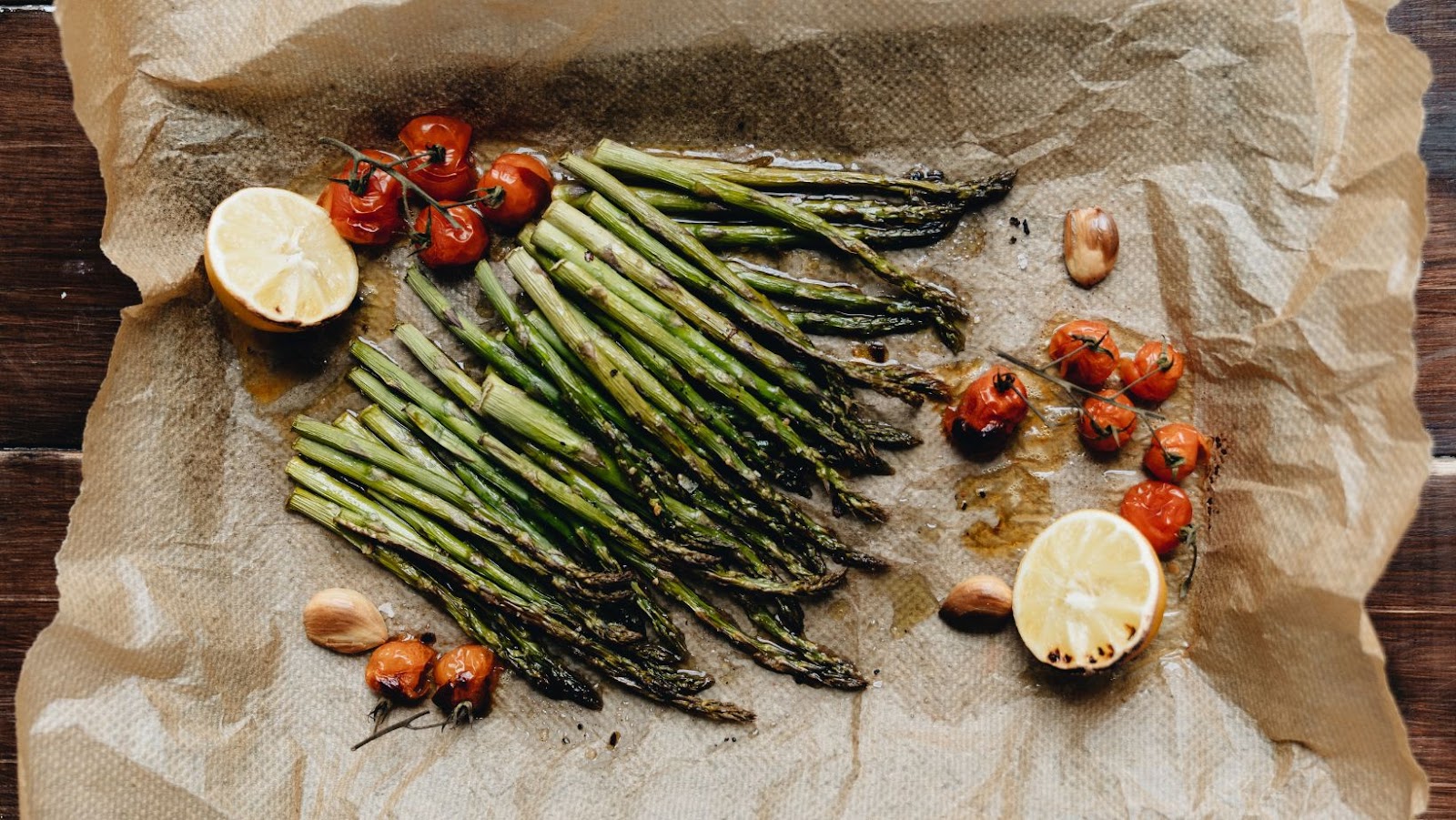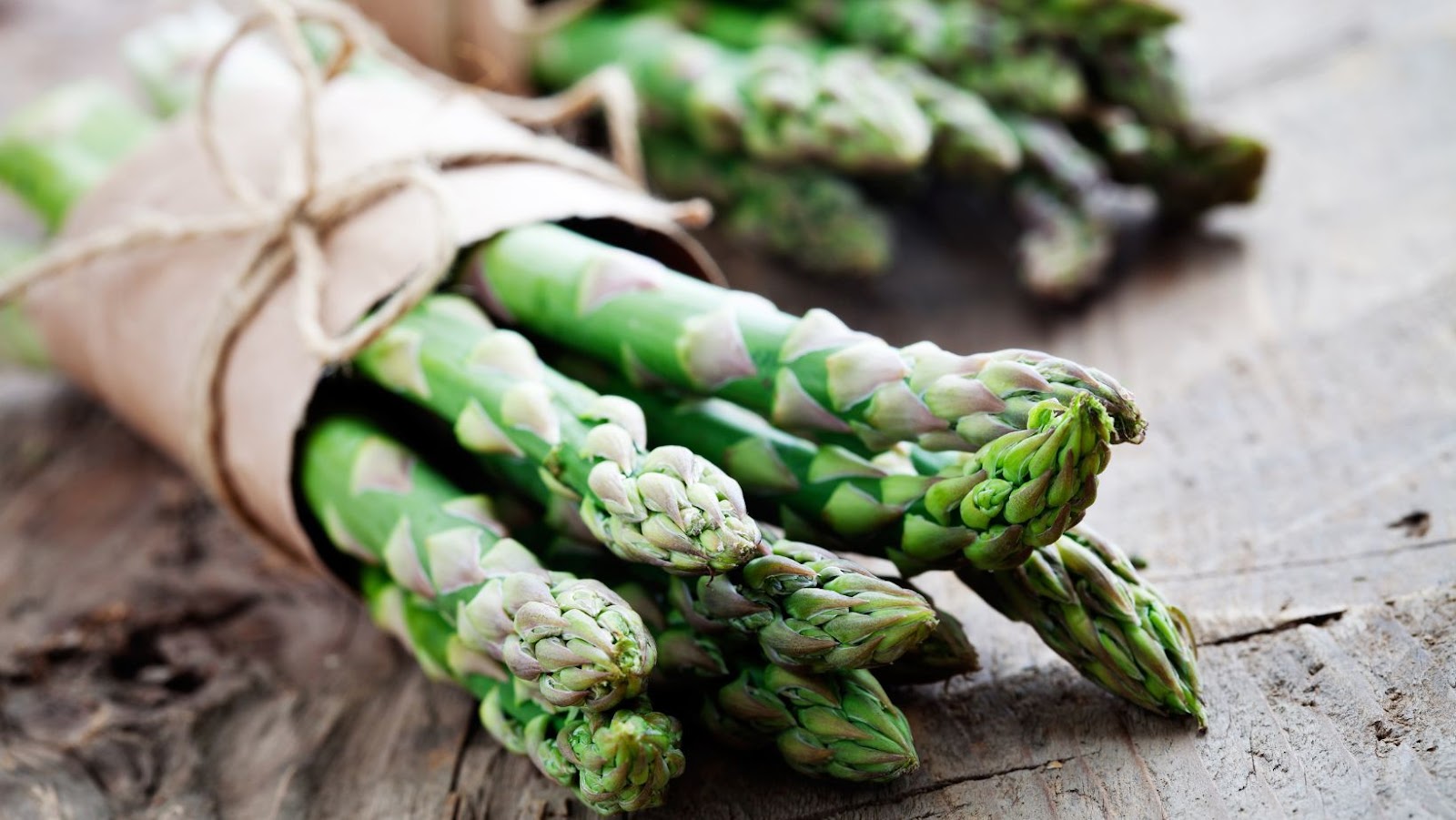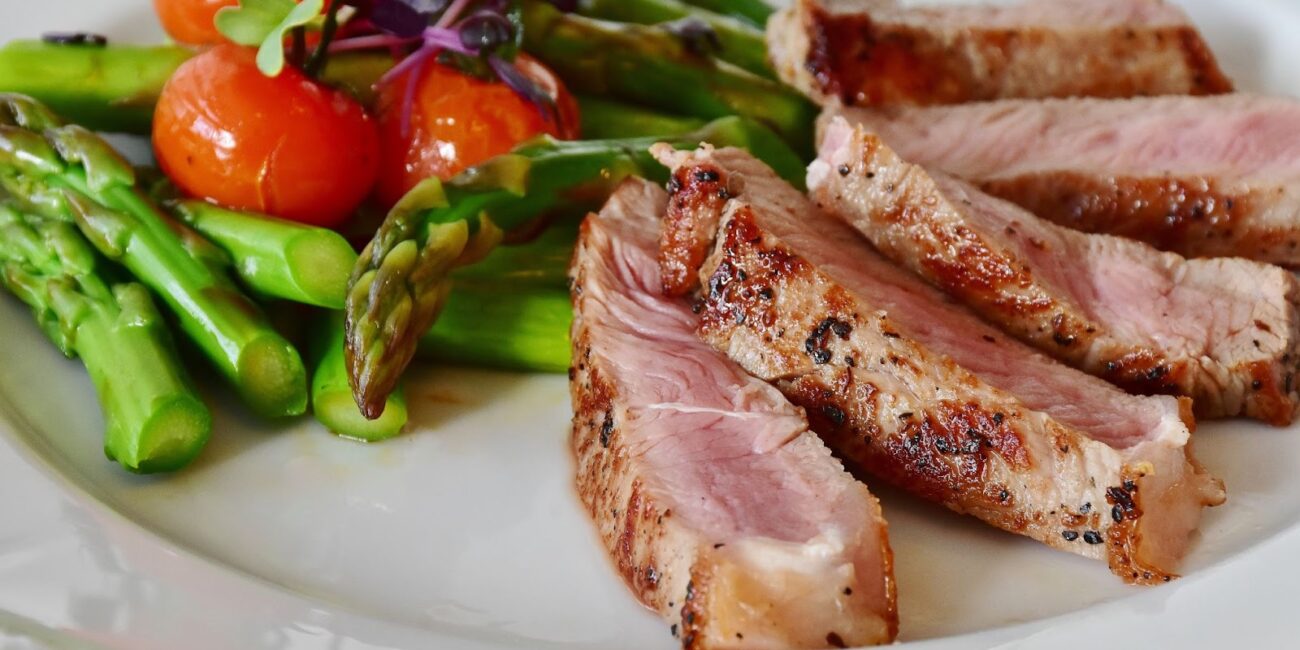To determine how many asparagus plants per person you’ll need, factors like the size of your garden, the yield per plant, and the amount of asparagus consumption per person must be considered. In this section, we’ll explore the optimal number of plants needed for individuals. We’ll examine the benefits of different factors affecting the number of asparagus plants per person without overlooking its consumption.
How Many Asparagus Plants Per Person?
Asparagus Requirements per Serving
Experience the finest of asparagus servings with the right plant count. Growing asparagus is a precise practice, and determining how many plants per person can be challenging. If you’re thinking of growing your own asparagus, here are some key points you might want to consider:
- Plant at least 5-10 plants per person for small servings.
- For bigger meals or harvesting from multiple cuttings, allot at least 15-20 plants per person.
- The type of soil and climate greatly impacts yield, so plant density should be considered accordingly.
- A good general rule is to gauge the number of plants on expected asparagus consumption in a year.
Different factors come into play when deciding how many asparagus plants one needs. Efficient utilization of space and maintenance cost while achieving a decent harvest is always desired.
Planting just enough ensures a steady supply that meets one’s consumption rates, but overplanting could lead to waste and additional labor costs.
Did you know that ancient Greeks believed that Asparagus had healing properties? According to them, it can cure toothaches and prevent bee stings!
Why worry about factors when you can just plant a whole bed of asparagus and call it a personal farm?
Factors Affecting the Number of Asparagus Plants Per Person
Asparagus Plants per Person: Understanding Factors That Play a Role
To determine the number of asparagus plants required for one person, several factors come into play. These include soil quality, climate, and spacing.
- The soil and its nutrient content play a vital role in determining the growth of asparagus.
- The climate of a region, especially the amount of sunlight and rainfall, can affect growth.
- Spacing is crucial to ensure that each plant gets enough nutrients and grows well.
- The age and health of asparagus crowns also play a role in determining how many plants one needs.
It’s worth noting that over-fertilizing or over-watering can also hinder growth. Thus proper care is essential to get an ideal number of plants.
When it comes to cultivating asparagus, planting it 2-3 centimetres deep is recommended, with each crown about 40-50 centimetres apart from each other.
Asparagus has been cultivated since ancient times, with evidence suggesting that it was eaten by early Egyptian cultures. Its use then spread throughout Europe during the first century AD.
Get your daily dose of vitamins and minerals by adding asparagus to your plate, and feel smug knowing you’re achieving your health goals while still enjoying delicious food.

Nutritional Value of Asparagus
To understand how asparagus can help you with your overall nutrition, you need to explore the macronutrient and micronutrient content of asparagus. In order to make sure you are meeting your daily requirements and taking advantage of the benefits of asparagus, you need to know its nutritional values. For that, this section called Nutritional Value of Asparagus with its sub-sections, Macronutrient content of asparagus and Micronutrient content of asparagus, will provide you with a complete solution.
Macronutrient Content of Asparagus
Asparagus is a vegetable rich in macronutrients, making it a nutritious and healthy choice. These macronutrients are essential for our bodies to function properly. Let’s take a look at the nutritional value of asparagus in detail.
| Macronutrient | Amount per 100 g serving |
| Calories | 20 |
| Carbohydrates | 3.9 g |
| Fiber | 2.1 g |
| Protein | 2.2 g |
| Fat | 0.2 g |
Asparagus also contains high amounts of vitamin K, vitamin C, folate, and potassium, which are all vital for good health. Regular consumption of asparagus can help lower blood pressure and regulate digestion.
Additionally, asparagus is low in calories and high in fiber, making it an ideal vegetable for those on a weight-loss journey.
Pro Tip: To get the most out of your asparagus, lightly steam it to retain its nutritional value!
Asparagus: the superhero of vegetables, packed with so many micronutrients that even Superman would envy its nutritional value.
Micronutrient Content of Asparagus
Asparagus is a nutrient-dense vegetable, making it an excellent addition to any diet. It contains various essential vitamins and minerals that are required for overall health and well-being.
A table showcasing the micronutrient content of asparagus is as follows:
| Micronutrient | Amount per 100g |
| Vitamin K | 41.6 mcg |
| Vitamin C | 5.6 mg |
| Folate | 52 mcg |
| Potassium | 202 mg |
| Phosphorus | 52 mg |
| Thiamine | 0.14 mg |
Other unique details about asparagus include its high antioxidant content and potential anti-inflammatory properties, which can help reduce chronic diseases such as heart disease and cancer.
Don’t miss out on incorporating this delicious veggie into your diet to reap its numerous benefits! Asparagus: the green spear that not only makes your pee smell, but also packs a healthy punch.
Health Benefits of Asparagus
To best understand the health benefits of asparagus with its anti-inflammatory, digestive health, and anti-cancer properties, you need to delve into the different sub-sections. Each of these offers a unique solution when it comes to improving your overall health.
Anti-Inflammatory Properties
Studies suggest that asparagus possesses unique anti-inflammatory properties, contributing to various health benefits. Asparagus contains antioxidants like flavonoids and carotenoids which act as natural anti-inflammatories, reducing inflammation in the body leading to reduced risk of chronic diseases.
Moreover, the saponins, specifically protodioscin present in asparagus have been found to exhibit strongly anti-inflammatory effects. Such potent anti-inflammatory agents make asparagus a great dietary addition for individuals suffering from inflammatory issues such as arthritis.
Asparagus also contains high levels of vitamin E and selenium which are known for their abilities to reduce inflammation by scavenging free radicals. Free radicals formed during metabolism can harm cells and cause oxidative damage resulting in inflammation.
Incorporating asparagus into one’s daily diet may help reduce inflammation and lower the risk of chronic diseases such as cancer, diabetes, and heart diseases. Therefore, it is wise to add these green spears to your diet regularly to take advantage of their numerous health benefits. Don’t miss out on this powerful vegetable!
“Eating asparagus is like playing Jenga with your digestive system – it keeps everything running smoothly without any shaky mishaps.”
Digestive Health Benefits
Consuming asparagus has numerous benefits for the digestive system. Here are six reasons why you should consider adding this delicious vegetable to your diet:
- Asparagus is high in fiber, which helps keep the digestive system running smoothly.
- It contains a prebiotic called inulin that feeds beneficial bacteria in the gut, aiding digestion and reducing inflammation.
- Asparagus also acts as a natural diuretic, flushing out excess salt and water from the body, preventing bloating and constipation.
- The phytonutrients in asparagus have been found to reduce the risk of inflammatory bowel disease (IBD) by promoting a healthy gut microbiome.
- Asparagus contains glutathione, a powerful antioxidant that protects the liver against damage caused by harmful substances.
- Finally, regular consumption of asparagus may help reduce the risk of colon cancer.
In addition to these benefits, it’s worth noting that asparagus has been used for centuries for its medicinal properties. Ancient Greeks and Romans consumed it to promote urinary health, while traditional Chinese medicine practitioners have long used it to boost fertility.
This humble vegetable offers a wealth of benefits for digestive health and overall well-being. So why not enjoy some roasted or grilled spears with your next meal?
Eat your asparagus and ward off cancer, because nobody wants a tumor as a roommate.

Anti-Cancer Properties
Studies have shown that asparagus exhibits remarkable anti-cancer properties. Asparanin A, a compound found in asparagus, has potential anti-cancer effects by inhibiting cell proliferation and inducing cancer cell death. Moreover, saponins in asparagus have also been shown to exert anti-inflammatory and anti-tumor activities.
Pro Tip: Include asparagus in your diet to take advantage of its potent anti-cancer properties.
Who needs a cookbook when you’ve got asparagus? It turns any bland dish into a classy gourmet meal.
Cooking with Asparagus
To cook delicious meals with asparagus, you need to know more than just how to prepare it. In order to make the most out of this versatile vegetable, we’ve got you covered with some popular asparagus recipes. Additionally, knowing the nutritional content of cooked asparagus can help you incorporate it into a well-balanced diet.
Popular Asparagus Recipes
Asparagus is an incredibly versatile vegetable that can be used in a wide variety of culinary dishes. In this section, we explore some of the most popular recipes that utilize asparagus as a key ingredient:
- Asparagus Quiche – A delicious and savory quiche recipe that features tender asparagus spears and other complementary ingredients such as cheese and herbs.
- Grilled Asparagus – The perfect side dish for any BBQ or outdoor gathering, grilled asparagus is simple to prepare yet incredibly flavorful.
- Asparagus Soup – Creamy and comforting, asparagus soup is a classic dish that can be enjoyed year-round. With a few simple ingredients, it’s easy to make at home.
If you’re looking for unique ways to incorporate asparagus into your cooking repertoire, try experimenting with different flavor profiles like spicy Asian-inspired stir-fry or crispy tempura-style bites. The possibilities are truly endless!
Legend has it that Ancient Greeks revered asparagus so much, they even erected monuments in its honor. It was thought to have medicinal properties and was often prescribed for ailments such as toothaches and bee stings. Nowadays, we simply enjoy it for its delicious taste and versatility in the kitchen.
Who says vegetables can’t be both delicious and nutritious? Asparagus begs to differ.
Nutritional Content of Cooked Asparagus
Cooked asparagus is a highly nutritious vegetable that provides significant health benefits. It contains essential vitamins and minerals like Vitamin K, Vitamin C, Vitamin E, folate, and potassium.
The nutritional content of cooked asparagus can be understood by looking at the following table:
| Nutrient | Content per 100g |
| Calories | 22 |
| Protein | 2.4g |
| Carbohydrate | 3.9g |
| Fiber | 2.1g |
| Fat | 0.2g |
| Sodium | 2mg |
Furthermore, cooked asparagus is low in calories and carbohydrates making it an ideal food for people who are trying to lose weight or maintain a healthy diet.
Asparagus is also rich in antioxidants that prevent cell damage and reduce the risk of chronic diseases like cancer. It contains a unique compound called asparagine that has diuretic properties and promotes kidney health.
According to Harvard Health Publishing, consuming asparagus regularly may lower blood pressure due to its high levels of potassium.
Get ready to stalk up on asparagus – just make sure it’s not the only thing in your grocery cart, or people might start to think you’re a little spears-obsessed.
Buying and Storing Asparagus
To ensure that you buy and store asparagus correctly, the best solution is to learn about the essential tips for choosing fresh asparagus and proper storage techniques. Choosing the best asparagus requires some basic knowledge, and we’ll cover all of that in the first sub-section. The second sub-section will give you the necessary insights for correctly storing asparagus, so you can enjoy fresh asparagus every time you use it in your recipes.
How to Choose Fresh Asparagus
To ensure that you get the best quality asparagus, it is essential to know how to select the right one. Here’s a guide on picking fresh asparagus:
- Check the tips of the asparagus: Look for bright green and tightly closed tips for freshness.
- Inspect the stalks: Examine the stalks for any signs of dryness or discoloration. The stem should be firm and unwrinkled.
- Bend it slightly: If you’re not sure whether an asparagus spear is fresh or not, bend it gently. If it’s fresh, it will snap quickly where tender meets woody. If it’s rubbery, it’s likely old.
It would help if you considered buying locally grown asparagus, which has a higher likelihood of being fresher than those imported from overseas.
When preparing asparagus for cooking, consider trimming off the bottom ends instead of washing them as they can be woody and tough to chew.
Storing asparagus is like keeping a diva happy – give it enough space and attention, and it’ll stay fresh and vibrant for longer.

Proper Storage Techniques for Asparagus
Maintaining the Quality of Asparagus During Storage
Asparagus is a delicate vegetable that needs proper storage techniques to maintain its freshness and flavor. Here are some tips:
- Trim the asparagus ends and clean them thoroughly before storing.
- Place them in a jar or container with an inch of water. Cover the tips with a plastic bag, and keep in the refrigerator.
- For a longer shelf life, store them upright in a jar, with their ends touching wet paper towels.
- Keep an eye on the moisture level, which should not dry out.
- Use vacuum sealing to freeze asparagus for extended usage.
Did you know that the potency of vitamin C in asparagus decreases over time? Hence it is advisable to consume them within two days of purchase. Proper handling and storage eliminate the chance of spoilage and increase its shelf life.
Don’t miss out on enjoying freshly flavored asparagus due to poor storage. Follow these simple yet effective techniques for best results.
Why settle for just one variety of asparagus when you can have a bouquet of spears to impress your dinner guests?
Asparagus Varieties
In order to expand your knowledge of asparagus, let’s delve into the section on asparagus varieties. This section will provide you with insights into popular varieties of asparagus and the differences in taste and texture between them.
Popular Varieties of Asparagus
Asparagus – The Types you Should Know
Asparagus is available in a variety of types, each with its unique taste and texture. Here are six popular varieties:
- Green Asparagus: The most common type and has a subtle, earthy flavor.
- Purple Asparagus: Sweeter and less fibrous than green asparagus.
- White Asparagus: Grown underground to avoid exposure to sunlight. Has a mild flavor and delicate texture.
- Wild Asparagus: Thinner and more flavorful than the cultivated types.
- Jumbo Asparagus: Thicker stems with a meaty taste but slightly tough texture.
- Baby Asparagus: Thin stems with a delicate flavor that cooks quickly.
Not only do these varieties offer various flavors, but they also differ in color, thickness, and nutrition content. It is interesting to note that the type of soil they grow in can impact their taste as well.
Pro Tip: When cooking asparagus, snap off the woody ends instead of cutting them for the perfect bite every time.
With so many asparagus varieties to choose from, you’ll never have to eat the same bland, soggy stalks again – unless, of course, you’re into self-torture.
Differences in Taste and Texture Between Varieties
When it comes to asparagus, the variations in taste and texture can make all the difference. Each variety has its unique qualities that set it apart from the others. For instance, some are thinner and more tender, while others are thicker and have a firmer bite. Additionally, different types of asparagus vary in sweetness and bitterness levels due to their growing conditions.
To give you a better idea of how these variations can impact your taste buds, we have created a table showcasing the differences in taste and texture between different asparagus varieties. The table below compares four popular types of asparagus: Green Asparagus, White Asparagus, Purple Asparagus, and Wild Asparagus.
| Varieties | Taste | Texture |
| Green | Slightly Sweet with a subtle earthiness | Crisp and Tender |
| White | Mildly sweet with no earthy flavor undertones | Firm and slightly bitter |
| Purple | Sweet with slightly fruity notes | Tender but chewy |
| Wild Asparagus | Slightly stronger flavor than other varieties, making it an excellent choice for savory dishes | — |
Another variety worth mentioning is Wild Asparagus. Unlike its cultivated counterparts that grow above-ground, wild asparagus grows underground and is harvested through foraging. It has a slightly stronger flavor than other varieties, making it an excellent choice for savory dishes.
With so many variations to choose from, don’t miss out on trying them all! Experiment with your recipes by using different types of asparagus to enjoy a range of flavors.
Next time you’re at the grocery store or farmer’s market, don’t be afraid to try a new variety of asparagus. You never know, you might just find your new favorite!
Asparagus has a rich history dating back to ancient Egypt, but I’m pretty sure that even Cleopatra wouldn’t choose it as her last meal.
Asparagus in History
To understand the cultural and historical significance of asparagus, it’s important to explore its many uses throughout the ages. In order to delve into this, we’ll dive into the section “Asparagus in History” with a focus on two sub-sections: “Historical uses of asparagus” and “Cultural significance of asparagus.”
Historical Uses of Asparagus
Throughout history, asparagus has been a highly valued and sought-after vegetable that has been used for both culinary and medicinal purposes. Its unique flavour and nutritional properties were highly regarded by the Ancient Greeks and Romans, who believed it to have health-promoting benefits such as reducing inflammation and aiding digestion. Asparagus was also highly prized in ancient China, where it was grown exclusively for royalty.
Historical records also show that asparagus was used by indigenous peoples of North America for its diuretic effects. It was traditional to use asparagus root preparations to promote urinary tract health. Today, asparagus continues to be celebrated for its nutritional content, which includes high levels of vitamins K, C, E, B6; folate; iron; calcium and protein.
Notably, a French legend tells the story of King Louis XIV being served an elaborate meal featuring asparagus on his wedding night. The king so enjoyed the vegetable’s delicate taste that he promptly ordered his gardeners to grow the finest quality of asparagus they could produce – making him one of the first avid cultivators of this beloved vegetable in modern Western Europe.
Asparagus: turning urine into a cultural phenomenon since ancient times.

Cultural Significance of Asparagus
Throughout history, asparagus has held significance in various cultures and traditions. People have utilized this vegetable for both culinary and medicinal purposes. The Ancient Greeks believed that asparagus possessed beneficial properties for the heart and kidneys. During the Renaissance period, asparagus was popularized in Europe, specifically France, where it became a symbol of luxury and decadence among the aristocracy. In some Asian cultures, such as China and Japan, asparagus is thought to provide vital energy to the body and improve overall health.
Asparagus has also played a notable role in mythology. In Greek mythology, Asclepius, the god of medicine and healing, used asparagus to treat his patients. In addition, there is a Persian myth that speaks of an enchanted garden where lovers can remain forever young by consuming foods such as asparagus.
Interestingly enough, even today, people still believe in some of these old wives tales about the benefits of asparagus. For example, many Chinese couples consume boiled asparagus soup leading up to their wedding day because they believe it will enhance fertility.
One true fact about the cultural significance of asparagus can be found in an article published by National Geographic. According to their research, before refrigeration existed in ancient times, Egyptians preserved asparagus by drying it in special ovens or burying it under sand.
Why buy expensive jewelry when you can grow asparagus and have your own green bling?
Growing Asparagus
To grow asparagus successfully, you need to start with the right kind of seeds and soil. With the sub-sections, Germinating asparagus seeds, Soil and watering requirements for asparagus plants, you can learn how to grow asparagus effectively.
Germinating Asparagus Seeds
The initial stage of Asparagus cultivation is the germination of its seeds – a crucial step towards producing a great yield. Here’s how to germinate asparagus seeds effortlessly:
- Step 1: Soak the seeds in water for 1-2 days.
- Step 2: For optimum results, chill them at 40°F (4°C) beforehand.
- Step 3: Mix sand with equal measure potting soil in a propagation tray. Scatter the preserved seeds on top of it.
- Step 4: Lightly cover them with more sand or sifted soil, keeping it wet throughout the process.
- Step 5: Store it indoors near any south-facing window where sunlight can reach, at an average temperature of about 77 degrees Fahrenheit until they sprout.
Ensuring that your seeds stay moist and warm during this period will provide better chances for their timely awakening. Interestingly, despite being easy to grow outdoors, asparagus plants require some caution when grown from seed.
For a successful development rate when planting asparagus from seed, add organic matter such as leaf mould to your seedbeds to boost your crop’s nutrition. Providing enough water will also help encourage growth after transplanting for an established root system.
Why do asparagus plants need good soil and watering? So they can grow up big and strong, just like your taste for dark humour.
Soil and Watering Requirements for Asparagus Plants
Asparagus plants require a soil type and watering frequency that is specific to their growth needs. Their soil and watering requirements must be met for optimal asparagus cultivation.
- Soil: Asparagus thrives in well-drained soil with a pH of 6.5 to 7.5. The soil’s rich content should consist of phosphorus, nitrogen and potassium; mix compost annually before planting.
- Watering: Asparagus plants need regular watering throughout their growing season as they don’t tolerate drought or soggy conditions which may lead to root rot.
- Fertilization: Add organic matter and mulch annually after cutting back the dormant ferns since asparagus plants are heavy feeders.
For better root development, plant them in trenches filled up slowly during the growing season. Opportunely, this will allow submission of the desired depth to encourage healthy spear growth.
Recent research recommends using a high-phosphorus fertilizer in spring while planting and nothing during the first harvestable year.
A wise farmer who had planted his asparagus crop on slopes bragged about eliminating extra irrigation expenses for this well-known thirsty crop by utilizing gravity drain techniques by digging trenches parallelly on several elevated planes, enticing water from downhill so each becomes self-sustainable directly through hydrostatic pressure due to building terraced sides creating inclines perpendicular at diversity wavelengths making it easy for drainage utilizing maximum usage of precipitation!



